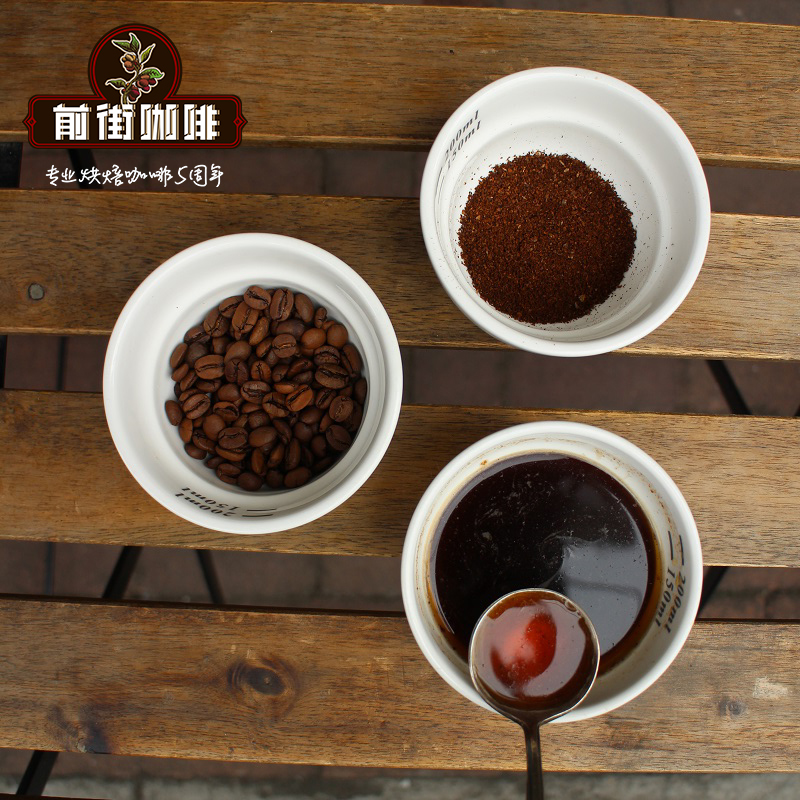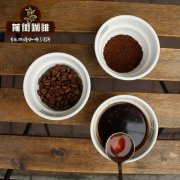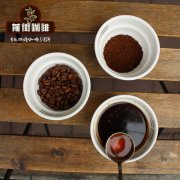What is the difference between Arabica and Robusta? Robusta began to be valued by people.

The long history of coffee attracts many people. For the third wave of coffee, enthusiasts want to know every step of its creation: farmers who manage plantations, workers who harvest and process coffee, and roasters looking for perfect roasting features.
From the beginning of the seed in time, it becomes a tree, produces beautiful white flowers and smells of jasmine. Then, the fruit turns into cherries, and hidden in these cherries are the "beans" as we know them.
London's Botanical Garden is responsible for identifying more than 120 different types of coffee, many of which are native to Madagascar, Asia and Australia. Among these species, Arabica coffee and coffee (Robusta) are the two main species, and they are the food consumed by many of us every day. Although there are many other members of the caffeine family, so far, they have not been proven to be used in production.
What is Arabica coffee?
Arabica coffee accounts for about 80% of the world's coffee production. It is native to Ethiopia and usually grows at an altitude of about 3000-7000 feet above sea level, mainly in the "bean belt" between the Tropic of Cancer and Mo ri. The area is rich in volcanic soil. Regular rainfall; sunny coffee needs to flourish.
Arabica coffee needs special care because trees are vulnerable to diseases and insect pests. Coffee bean rust or La Roya is a fungus that shows orange plaques and damages photosynthesis. If not handled properly, it can cause leaves to fall, kill trees, and may destroy plantations. Arabica coffee is also vulnerable to pests, such as Coffee Berry Borer or Broca, a small beetle that lays its eggs in coffee cherries. After hatching, the beetle ate the cherry, greatly reducing the quality of the cup.
Despite these obstacles, Arabica coffee is the first choice compared to Robusta coffee because of its soft and pleasant taste. A cup of Arabica coffee is delicious, floral, fruity, citrus, dirt, butter, chocolate, caramel, honey or sugar. Tastes can also range from sweet to full-bodied, depending on where the beans are grown and how they are processed.
What is Robusta?
Robusta is native to West Africa and grows at lower elevations and higher temperatures. It constitutes coffee production in other parts of the world. Beans are small and round, but contain twice as much caffeine (hence the name) as oval Arabica coffee. Concentrated caffeine can be used as a natural pesticide to help protect it from most insects. This makes it cheaper to grow and easier to maintain. It also produces more oil, so it is often used for mixing.
Despite its positive quality, it is not a popular bean. In fact, most coffee lovers are not satisfied with the idea of Robusta-mainly because it is used in instant coffee or mixed with Arabica coffee to produce cheap and low-quality products. Once roasted and brewed, the taste of Robusta is usually described as bitter or pungent, with a hint of wood and rubber. However, although Robusta is usually popular with most coffee lovers and is not the standard choice of beans, there has been a defense of it.
Let it go-the Robusta renaissance:
Gabe Shohet, co-founder of London Black Sheep Coffee, specializes in Robusta Coffee. The cafe was founded by Shohet and a group of friends after they decided to get more money from regular coffee; they liked it to be strong, full-bodied and caffeinated. Like their names, they have got rid of the mainstream coffee culture.
However, there are good reasons for Shawcht's admiration for Robusta. Shawcht points out in Fairness and Electronic quality: the case of Robusta that while Robusta's reputation is well-deserved, beans themselves are not to blame. Robusta is usually mechanically selected, which means everything from rotten and immature beans to insects and branches can be harvested. This combination is guaranteed to produce a bad cup of coffee.
So Shocht set out to determine how Robusta would taste if he received the same care and attention as Arabica coffee. After months of trial and error, Shohet and the company encountered the world's first professional Robusta farm. India's Sethuraman Estate carefully selects, scrubbed and dried robusta coffee beans. As a result, the taste characteristics were described as more distinctive than Arabica coffee. High-caffeinated drinks make people feel uncomfortable to keep them healthy throughout the day, with bold flavors of walnuts and chocolate.
While Arabica coffee may still be the first choice, Robusta began to name itself because people like Shohet asked consumers to give it a chance.
Important Notice :
前街咖啡 FrontStreet Coffee has moved to new addredd:
FrontStreet Coffee Address: 315,Donghua East Road,GuangZhou
Tel:020 38364473
- Prev

What can the baking date tell you about coffee? the fresher the beans, the better.
The barbecue date is not all. First of all, we need to clear one thing. We are talking about the baking date, but this alone does not let you know the taste of coffee. When you buy food, you will look for the freshest food. Of course, you need to check the best date. Then there are visual cues: the hardness of avocados, the bluish purple on onions, and the redness of fish eyes. However, to get to the bottom of the food
- Next

What is the third wave of coffee? is there any difference between the third wave of coffee and boutique coffee?
The third wave of coffee, we always come across this phrase in coffee shops or online. But what does it actually mean? How is it different from specialty coffee? What are the first, second and fourth waves? It is not easy to define the third wave. You will hear different explanations everywhere-some even contradict each other! So we contacted some industry experts and asked them how to define it.
Related
- Beginners will see the "Coffee pull flower" guide!
- What is the difference between ice blog purified milk and ordinary milk coffee?
- Why is the Philippines the largest producer of crops in Liberia?
- For coffee extraction, should the fine powder be retained?
- How does extracted espresso fill pressed powder? How much strength does it take to press the powder?
- How to make jasmine cold extract coffee? Is the jasmine + latte good?
- Will this little toy really make the coffee taste better? How does Lily Drip affect coffee extraction?
- Will the action of slapping the filter cup also affect coffee extraction?
- What's the difference between powder-to-water ratio and powder-to-liquid ratio?
- What is the Ethiopian local species? What does it have to do with Heirloom native species?

